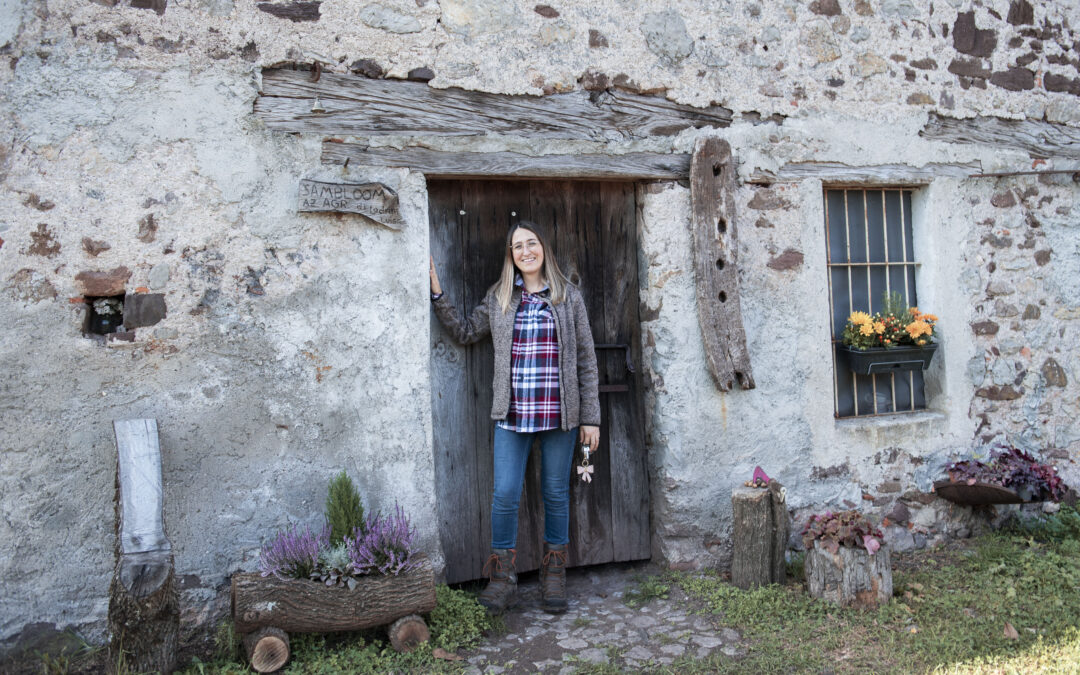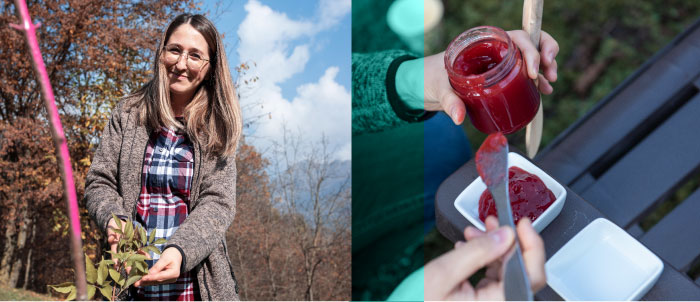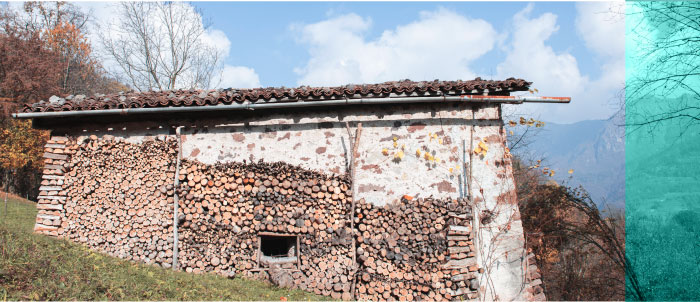SAMBLOOM
BUSINESS: Sambloom
ADDRESS: Pertica Bassa (BRESCIA)
FACEBOOK PAGE: facebook.com/sambloom
“ON CAMPUS” COURSE: ReStartAlp 2018
I lived in Bologna, where I was a lawyer, specialising in new technologies I moved back to Brescia when I met my husband. I decided to change life. Now I can say that the woods are addictive. Through my products, preserves and syrups, I want to promote the natural wealth of the Valsabbia valley, as well as local woods”.
Luisa Lodrini
“In the woods, sounds change every day – it’s a constant training for the senses,’ says Luisa Lodrini. The background to our conversation is the sound of the leaves crunching under our feet: it’s autumn, and a path through the trees is the only way to reach the headquarters of her farm, Sambloom, in the mountains of Pertica Bassa, in Valsabbia, near Brescia.
“I saw the ad on the Internet” explains Luisa, who bought the land – two hectares overall, including woodland and an old pasture – in June 2019. “I was born and currently live in Brescia. I came to Valsabbia because I was struck by the beauty of this area. The Pertiche valley is one of the traditional places of the Italian Resistance in the Brescia area (in Pertica Bassa you can also visit a museum dedicated to it, Author’s note), where the Fiamme Verdi brigade was active, and the woods are full of partisan trails”.
The area is well known for its traditional cheeses and the gathering of wild herbs, but also for its artistic tradition of wood carving. “I started looking for a plot of land and after a year and a half I found this small haven” says Luisa as, after walking the last stretch through the chestnut trees, we look out over the small plateau in front of the barn. We are at an altitude of 900 metres above sea level.
Behind it lies the old pasture, about 4,500 square metres. The animals are no longer there, and in their place are neat rows of strawberries and wild strawberries. A little further on are some very young elders. “I planted everything during the lockdown in spring 2020″ says Luisa, who carried everything up here on her shoulders, about 20 kilograms at a time.
On the terraces reclaimed around the old barn there are also other plants: some varieties of aronia, edible roses, currants, rhubarb, and blackberries. The area is fenced off with 80 poles (“I made them myself, using dry wood, and then they were put up by a local company” says Luisa), which protect the area from the ungulates living on the mountains that frame the Pertiche valley – Corna Blacca and Monte Tegaldino.
Aronia, edible roses
The berry fruits of Aronia melanocarpa, one of the plants Luisa Lodrini chose for her land in Pertica Bassa, are a natural source of phenolic phytochemicals such as procyanidins and anthocyanins. Consequently, this plant can be used for a wide range of medicinal and therapeutic applications.
Edible roses, on the other hand, are roses whose petals can be eaten fresh or processed into syrups or preserves.







